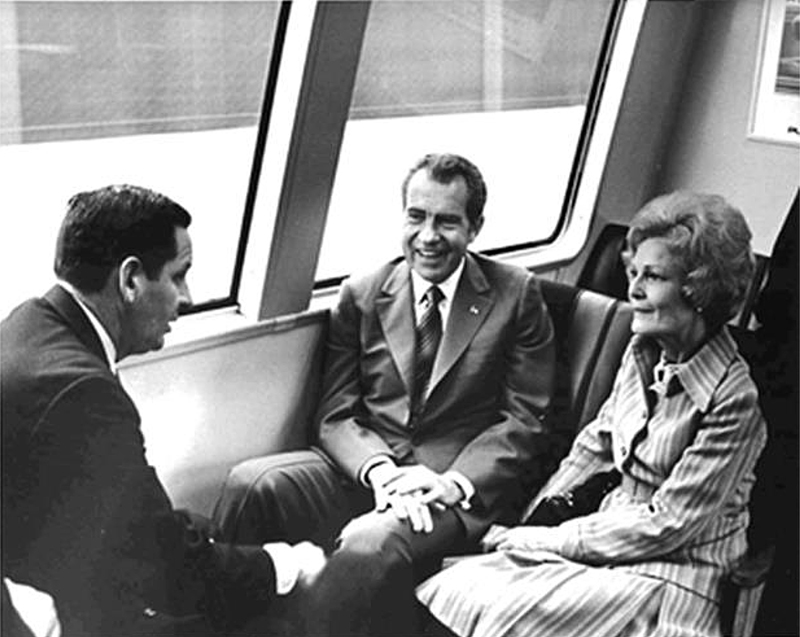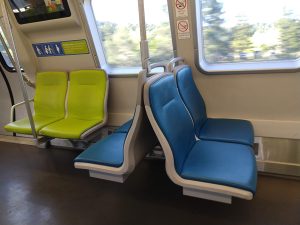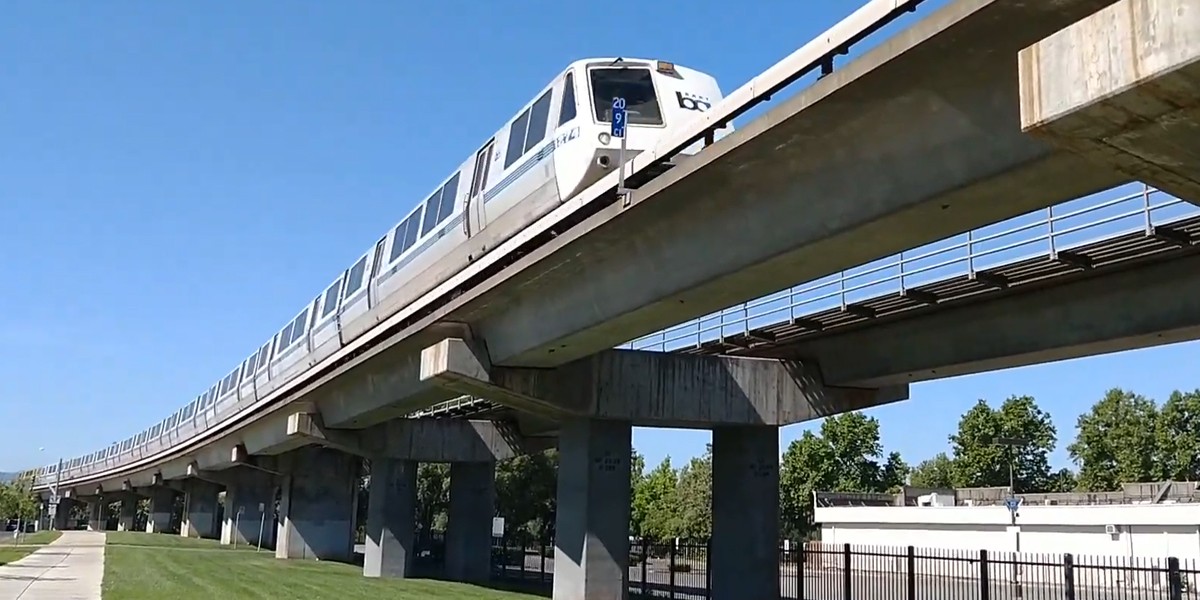BART Turns 50 — Fit for a President

SAN FRANCISCO BAY AREA (Sept. 4, 2022) — President Richard Nixon and First Lady Pat Nixon rode BART on September 27, 1972, sixteen days after BART opened for the first time. Nixon came “to marvel at the future of mass transportation,” according to Mike Healy, BART’s Director of Public Affairs.
And marvelous it was. BART launched as the first new rapid rail system in almost 60 years. Unlike the subways on the East Coast, it had big picture windows, wide upholstered seats and carpeted floors. It looked like the seating in an airplane. The cars had air-conditioning and noise reducing insulation. BART was as comfortable as a car, but faster, because the trains weren’t stuck in traffic.
And that was the point. BART had been designed to lure people out of their cars.
“Nixon enjoyed the ride, saying the system ‘looks like NASA’,” according to Healy, who rode the train with the president that day. The president later commended BART for “setting an example for the nation,” said Healy,1 and presented the system with a $38 million check.
And who else rode that train? The photo shows the president with B.R. Stokes, the general manager of the new BART system. However, it doesn’t show a U.S. Marine holding a “football” briefcase the with nuclear button.
Wear and Tear

In 1972, BART served about 100,000 riders a week.2 At the end of my term on the BART Board of Directors in 2016, it was serving around 440,000 riders a day. The elegant and comfortable cars were indeed fit for a president. But they couldn’t stand up to BART’s popularity over the years. With the wear and tear of such crush passenger loads, the fabric seats and carpeted flooring were no longer appropriate.
“Why does BART have those disgusting seats?” I was often asked this by constituents when I was on the BART Board of Directors. “I don’t even know who sat there and what they were doing. Ugh!”
The fabric seats had served their initial purpose of attracting riders onto public transit. But with so much use, my constituents were right—they had become disgusting. They needed lots of maintenance. Each wool cover required removal and dry cleaning. And they were costly. BART was spending $600,000 a year just on dry cleaning costs.3 Forty-two years after BART began service, upholstered seats were replaced in 2014 by vinyl seats with silicone cushions that wipe clean.
The same with the wall-to-wall Mohawk carpeting and its padding. BART added the bluish-grey carpet to reduce noise in the cars. But even with vacuuming every night, and frequent deodorization and machine scrubbing, the carpet looked dirty and ugly during the last years of its life. In 2008, BART started replacing the carpet with vinyl flooring.
Fleet of the Future

BART began retiring the original train cars in 2017 when new “Fleet of the Future” cars arrived. Besides easier-to-maintain seats and floors, these train cars have amenities that didn’t exist 50 years ago. Each car has a digital screen with a dynamic map that tells riders their current location and the trains destination. WiFi coverage is being added throughout the system. Plug-style doors better seal out external noise than the original doors, which were often breaking and causing train delays. And now that the trains go to both the San Francisco and Oakland airports, seats that are higher off the floor create storage underneath for luggage and packages.
Riders didn’t think about ventilation 50 years ago. But with COVID-19 and all its variants, the indoor air we breathe rests high on our list of concerns. BART uses a MERV-14 filter, which is a Minimum Efficiency Reporting Value often used in hospital settings. The filters replace the air with new or filtered air about 50 times an hour.4
BART may not be fit for a president relaxing in comfort as President Nixon did, but we can enjoy better communication technologies on board as well as cleaner air. And fifty years later, BART has a new design, fit for You and Me.

- “50 years of service: A look back at BART’s electric opening day,” BART News Articles, May 16, 2022.
- “50 years of BART: Inside the original BART cars,” BART News Articles, June 10, 2022.
- “Vinyl validated: Survey shows customers prefer new, easier-to-clean seats,” BART News Articles, June 10, 2012.
- “Your BART train might stink, but COVID ventilation is strong, experts say,” by Eliyahu Kamisher, The Mercury News, April 26.
